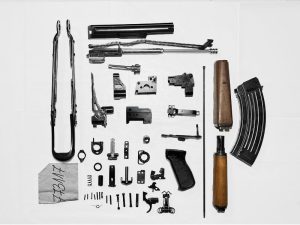You want a smooth trip, zero drama at the counter, and your ZastavaArms setup ready for the range when you land. Good news: flying with a suppressor works fine when you follow the rules and pack like a pro.
Here’s a clear, upbeat guide that keeps you on the right side of TSA, airline desks, and common sense—while keeping the focus on ZastavaArms quality from start to finish.
The Short Version: What TSA Actually Allows
TSA says “no” to carry-on and “yes” to checked baggage for firearms and firearm silencers/suppressors. You must place them unloaded in a locked, hard-sided case and declare the case to the airline agent at check-in.
Only you retain the key or combination, unless a TSA officer asks you to open the container for inspection. That’s the backbone of flying with a suppressor in the U.S.
ATF Reality Check: Do I Need Extra Paperwork?
For interstate trips inside the U.S., suppressors do not require an ATF Form 5320.20. ATF requires that form for machine guns, SBRs, SBSs, and destructive devices—but explicitly not for silencers.
Keep your approved Form 4 (tax stamp) with you anyway; agents sometimes ask for proof of registration. If your itinerary touches multiple states, you must still follow state and local laws at your destination and anywhere you overnight.
Airline Counters: How to Declare Without Stress
Walk to the full-service check-in desk (not the kiosk). Calmly say, “I need to declare a locked, hard-sided case with an unloaded firearm and accessories.” You don’t need to give a speech. The agent will hand you an orange or red declaration card; sign it and place it inside or as instructed.
Stay friendly. You control your key/combination for the case; the airline doesn’t. When flying with a suppressor, that small bit of procedure sets the tone for a smooth day. If a TSA officer needs to verify the case, they’ll call you to open it.
What “Locked, Hard-Sided Case” Means (And Why It Matters)
TSA’s rule has teeth: the case must prevent prying. If your case has multiple lock points, use them. The case goes inside your checked suitcase or travels as its own checked item—both options work. You retain the key/combination.
You don’t hand it to the airline; you don’t tape it to the lid. This keeps your ZastavaArms gear secure and compliant from counter to carousel.
Ammo Rules, Simplified
Ammunition rides in checked baggage only. TSA allows it when packed properly (think: factory or purpose-built containers), and airlines can add their own limits.
Keep small-arms ammo boxed, secure, and separate from your firearm in the same hard case or in another checked bag—follow the airline’s written policy to the letter.
ZastavaArms Owner Tips That Save Time
- Print your proof. Bring a paper copy (and a phone PDF) of your approved Form 4 for the suppressor registered to you.
- Match gear to your plan. If your trip includes a ZastavaArms rifle, confirm each component fits your hard-sided case without stress on threads or mounts.
- Use thread caps. Protect your muzzle and your suppressor’s mount points.
- Label discreetly. Put your name and cell on the inside of the case.
- Arrive early. Give yourself an extra 15–20 minutes at the desk for the declaration process.
State Lines and Common Pitfalls
You can fly with your suppressor if the destination state allows possession. ATF doesn’t require 5320.20 for silencers, but it expects you to comply with state and local law.
If a connection or weather delay forces an overnight in a jurisdiction that bans suppressors, do not remove your checked case from airline control; keep it in the airline system and recheck on the next flight. That strategy avoids unplanned possession issues outside the airport.
International Travel: Different Game, Different Paperwork
Domestic flights stay simple. International travel adds export/import rules and forms you must handle before you go. ATF uses 5320.20 for the temporary export of certain NFA firearms, and international re-entry involves extra steps and agencies.
If your plans include another country, do a formal export/import checklist well in advance and confirm destination law in writing.
Why ZastavaArms Makes Travel Easier
Reliable gear reduces stress. ZastavaArms rifles and accessories pair well with quality cases, thread caps, and robust mounts that stay true after baggage handling.
You keep mission-ready alignment, secure thread interfaces, and confidence when you arrive—so range time starts right away. You fly, you land, you confirm zero, you smile.
Final Flow: From Curb to Carousel
- Curb: Arrive early, stay calm, and walk to the staffed counter.
- Desk: Declare the locked hard-sided case with an unloaded firearm and suppressor. Sign the card.
- Screening: If called, unlock for TSA, then re-lock; you retain the key.
- Fly: Keep your claim checks handy.
- Arrival: Grab your luggage, verify the case, and you’re good to roll.
Flying with a suppressor stays simple when you pack to TSA standards, carry your documents, follow airline instructions, and verify local laws at your destination—then let your ZastavaArms gear do the rest.



